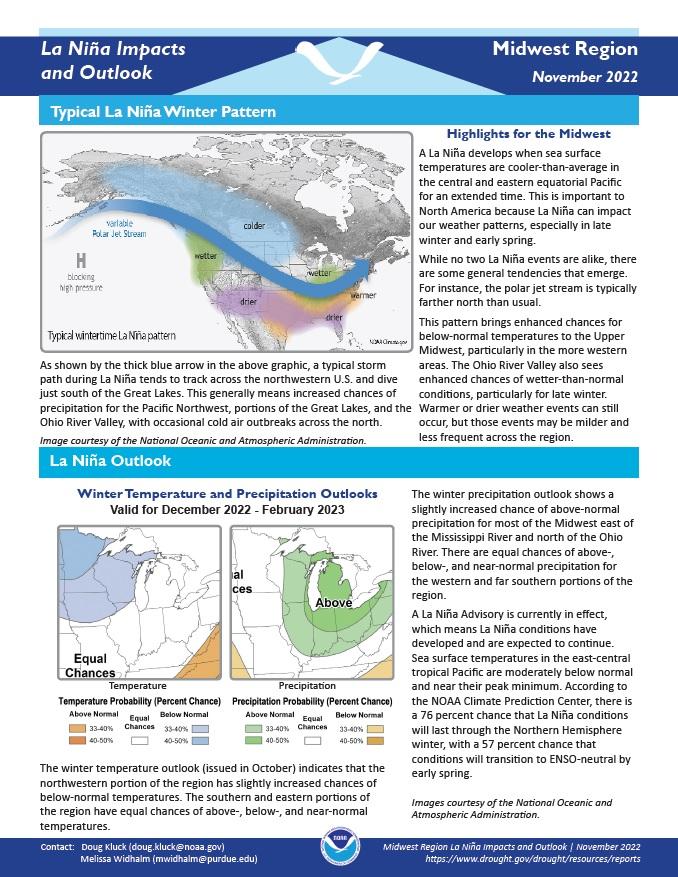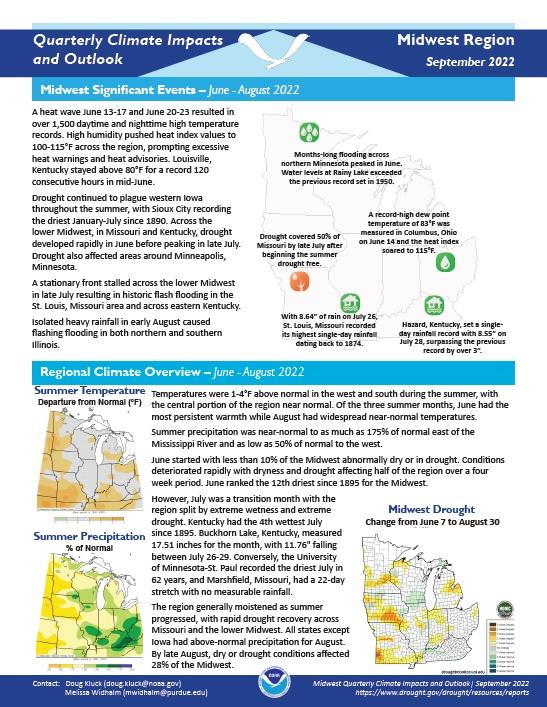For the latest forecasts and critical weather information, visit weather.gov.
This handout provides information on the typical La Niña winter pattern; the La Niña outlook; potential impacts; and comparisons of conditions during previous La Niña years for the Midwest U.S. Updated November 2022.
NOAA’s Regional Climate Services Program created these outlooks to inform the public about climate impacts within their respective regions. Each regional report contains easy-to-understand language, and anyone can access them through the Drought Portal.
This study, led by researchers from the University of Nebraska Medical Center and published in the International Journal of Environmental Research and Public Health, assessed "potential changes in health risk from droughts during the last decade in the contiguous United States."
Quarterly Climate Impacts and Outlook for the Great Lakes Region for June–August 2022. Dated September 2022.
June, July, and summer were within 1°C (2°F) of normal for most of the basins, with a few U.S. locations that were warmer. The overall basin saw 90% of average precipitation for summer, and all basins were drier than normal.
Quarterly Climate Impacts and Outlook for the Midwest Region for June–August 2022. Dated September 2022.
Temperatures were 1–4°F above normal in the west and south during the summer, with the central portion of the region near normal. Summer precipitation was near normal to as much as 175% of normal east of the Mississippi River and as low as 50% of normal to the west.
Quarterly Climate Impacts and Outlook for the Great Lakes Region for March–May 2022. Dated June 2022.
Spring ranged from 2°C (4°F) below normal in the Superior basin to 2°C (4°F) above normal in the Erie and Ontario basins. The overall basin saw 111% of average precipitation for spring, with Erie and Ontario being drier and the other basins being wetter.
Quarterly Climate Impacts and Outlook for the Midwest Region for March–May 2022. Dated June 2022.
Spring precipitation was near- to above-normal across the Midwest, with most areas at 75%–125% of normal precipitation. The upper Midwest and southern Missouri were the wettest locations with over 150% of normal precipitation. Spring temperatures averaged 1–4°F below normal in the northwest and 1–3°F above normal in the southeast, with near-normal conditions in between.








